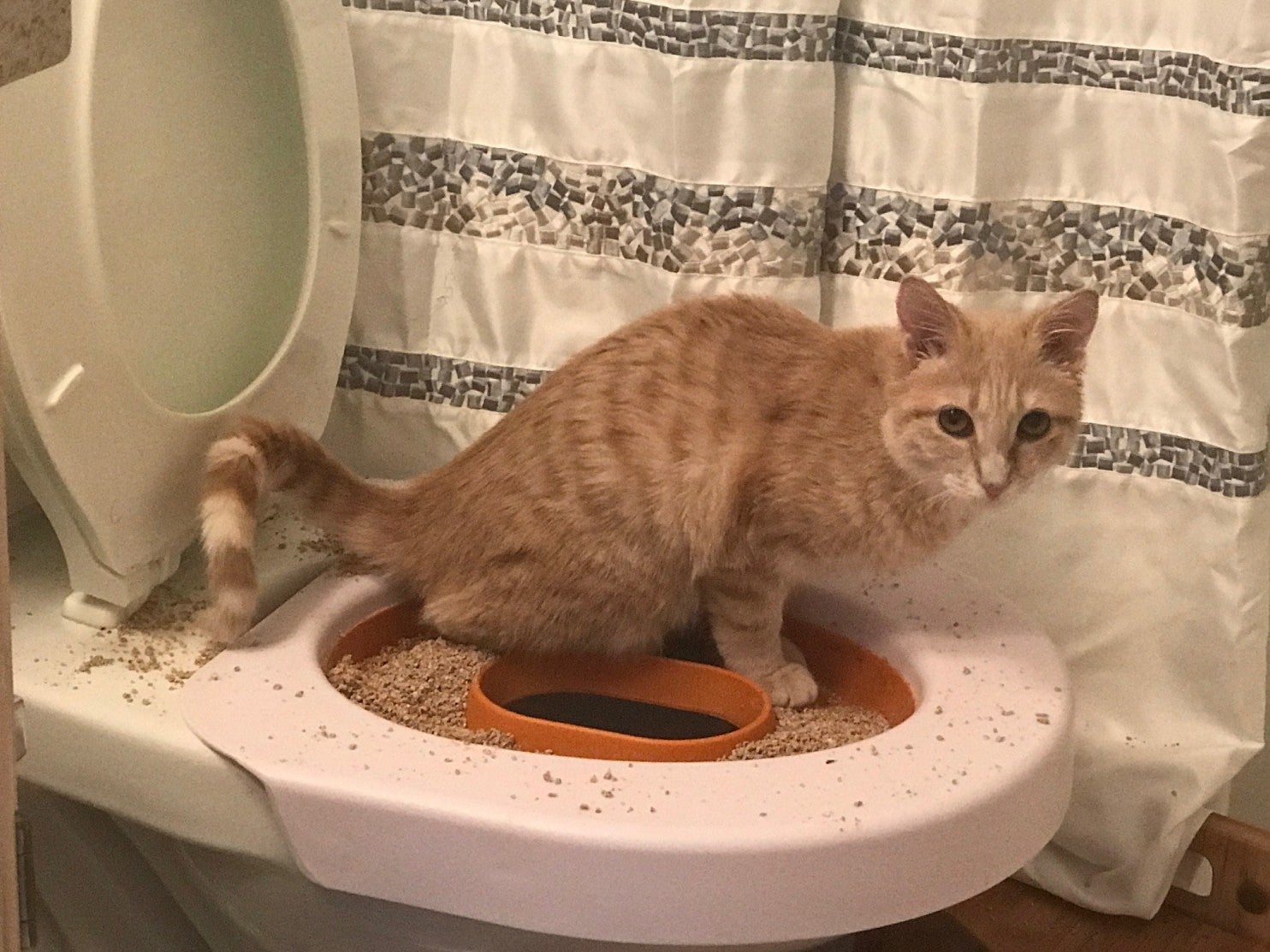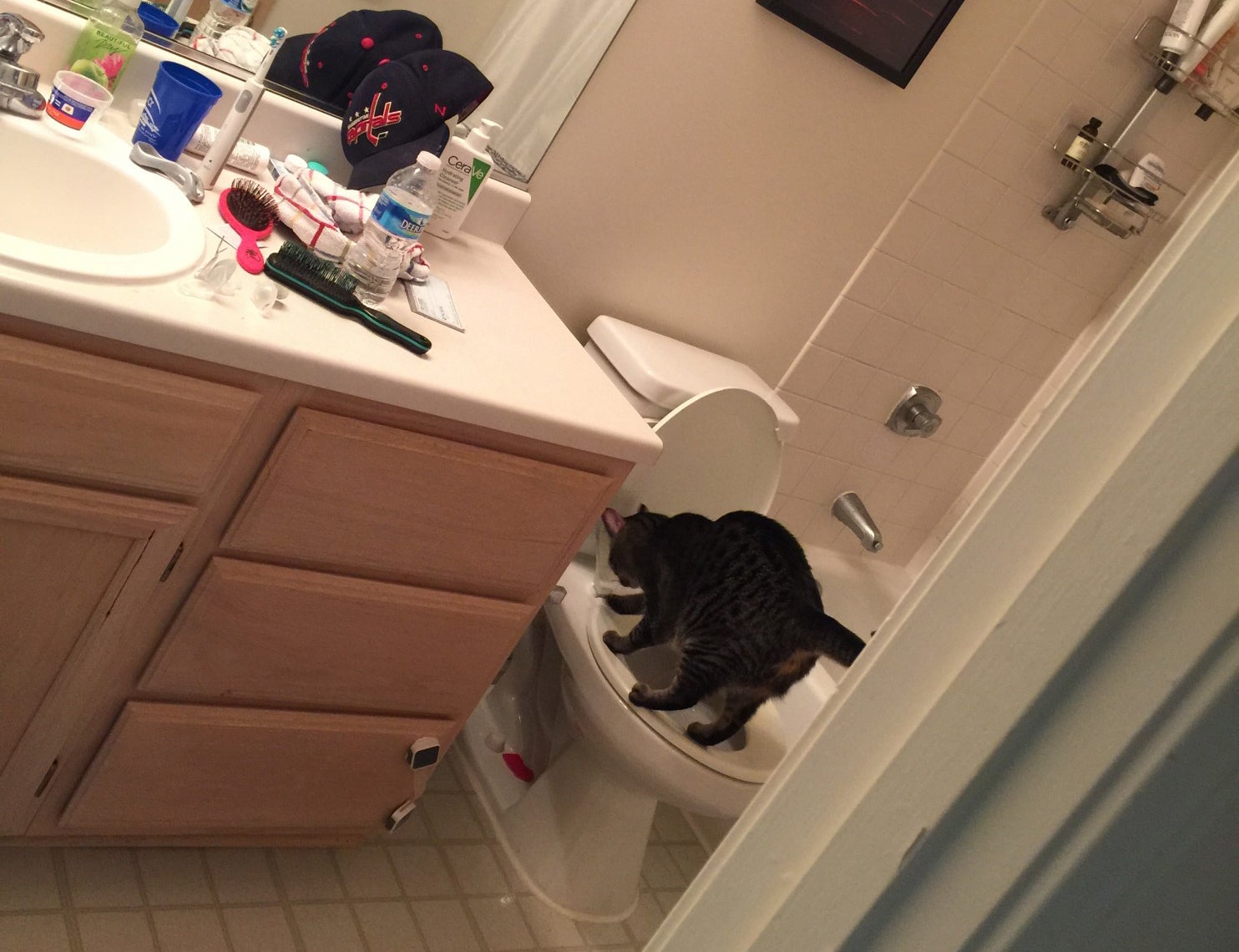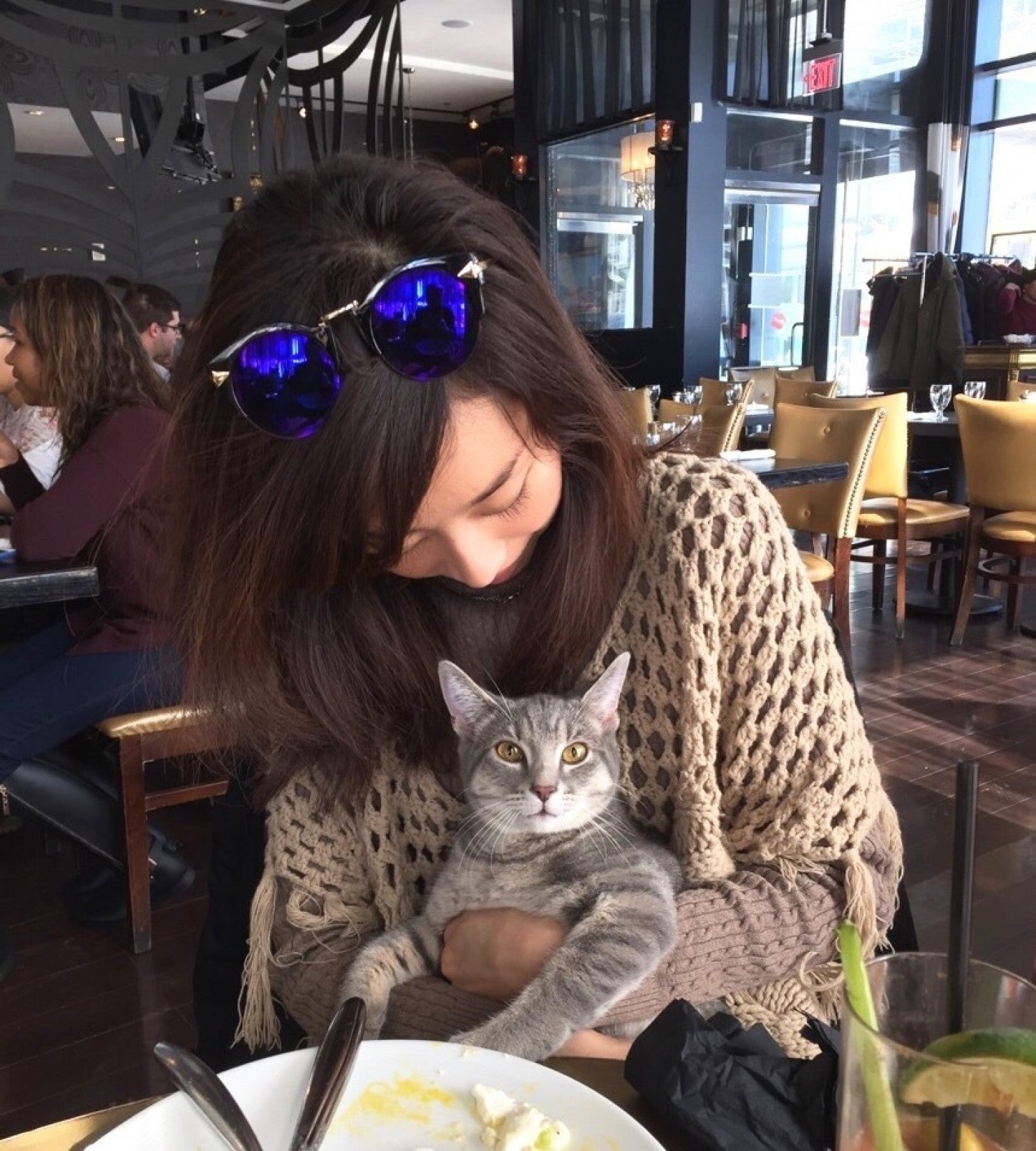You can train your cat to use the toilet. Just don’t expect it to flush

Your support helps us to tell the story
From reproductive rights to climate change to Big Tech, The Independent is on the ground when the story is developing. Whether it's investigating the financials of Elon Musk's pro-Trump PAC or producing our latest documentary, 'The A Word', which shines a light on the American women fighting for reproductive rights, we know how important it is to parse out the facts from the messaging.
At such a critical moment in US history, we need reporters on the ground. Your donation allows us to keep sending journalists to speak to both sides of the story.
The Independent is trusted by Americans across the entire political spectrum. And unlike many other quality news outlets, we choose not to lock Americans out of our reporting and analysis with paywalls. We believe quality journalism should be available to everyone, paid for by those who can afford it.
Your support makes all the difference.The apartment Daniel Freudberg shares with his girlfriend has two bathrooms. One is used by the couple and visitors. The other is used by their seven-month-old kitten, Kal, who does all his business in there – on the toilet.
“We never bought an actual litter tray,” said Freudberg, 27, a retail store manager from Arlington, Virginia, in the US, who so strongly believes in cat toilet training that he has encouraged his boss to try it. “I love it, honestly.”
Many people treat their pets like furry children. But within that demographic is a small minority of cat owners who have taken pet humanisation to the next level by eschewing litter in favour of sharing the toilet with their animals. Toilet training cats is surprisingly possible, evangelists say, and the benefits are great: No litter tray smell. No gravelly grains underfoot. No scooping. (Just flushing, because thumb-less felines are no good at that.)
Is this a growing group? It’s impossible to say; no one tracks cat toilet use. But there’s enough of a market to support feline toilet training kits with hundreds of reviews on Amazon, as well as two new books on the topic. One is the 25th anniversary edition of the pioneer volume in this subject area, Paul Kunkel’s How to Toilet Train Your Cat, which promises success in 21 days. The second, Toilet Train Your Cat, Plain and Simple, is by Clifford Brooks, a Silicon Valley writer who says the process takes three months and loads of patience but is well worth it.

“We are an elite group, those of us who train our cats to use a toilet,” said Brooks, 56, who is now working on a book about cat-walking and meditation. “Most people say, ‘My cat can’t do that.’ And I’m here to say all cats can do it.”
The methods detailed in both books and kits are all relatively similar and will sound familiar to anyone who has potty-trained a toddler. They involve baby steps, rewards like treats or praise, occasional accidents and no reprimands. In the case of cats, the process also involves placing a litter-filled insert in the toilet bowl, then gradually reducing the litter inside it while widening a hole in the insert that allows the litter and waste to drop into the water below.
This same general idea was championed by none other than the late jazz legend Charles Mingus, who toilet-trained his cat, Nightlife, and decided to share his method with the world via a mail-order “CAT-alog” of instructions.
Brooks – whose eight-step method relies on items readers are likely to have at home, such as an expendable mixing bowl – advises first doing a “truffle test”: Dropping an orb-shaped chocolate into the toilet to make sure the splash isn’t so high that it will dampen and disturb the feline above. Brooks said he has successfully trained eight cats and is currently coaching his two kittens, Anderson Cooper and Gloria Vanderbilt.
Jee Lee, a reporter in Washington, has a two-year-old tabby, Hanuri, who now uses the toilet. “I remember when she went for the first time. I was so proud of her,” Lee said.

She taught Hanuri using a product called CitiKitty, and it took two rounds of training. But now, Hanuri reliably does a number two once daily in the early morning. Number one happens whenever the cat likes. Lee, who says she is a “little bit like a clean freak”, finds this all far preferable to a litter tray, although she says it baffles her friends.
“Even if they love their cats, they don’t want to share their toilet with them,” said Lee, who sometimes takes Hanuri along when she goes out for brunch. “We share the toilet. We share everything.”
Whether toilet training is good or enjoyable for cats is unclear. Sarah Ellis, a cat behaviourist and co-author of The Trainable Cat, said that it is a skill she has never wanted to teach. For one thing, she said, burying waste is a natural behaviour for cats. For another: “If they miss, I would not want cat faeces on my human toilet where human members of the family go to the bathroom.”
While none of the toilet-training cat owners interviewed said they had experienced that complication, they did acknowledge that sharing a bathroom with a cat can lead to awkward moments. Guests who use the bathroom, for example, might find the litter insert in the toilet or even unflushed waste that they might attribute to the human. This happened to Brooks, and there also was the time a cable repairman found a pile of cat poop on the floor because someone had shut the bathroom door and left the kitty no place else to go.

“You’ve got to make sure you keep the seat up all the time,” Brooks said. “You can’t forget that.”
A trained cat can also develop some humorous habits. Brooks said one of his cats closed the door behind her when she used the bathroom. And every cat he’s trained has taken up the practice of racing him to the toilet when he gets up to go.
“You’ll have to stand there and wait for them,” Brooks said. “I literally think they think it’s amusing.”
For Freudberg, Kal’s owner, toilet training was a selling point. He had recently taken care of his brother’s and sister-in-law’s cat, Fuzz, for a year. And Fuzz, coming from a tiny Brooklyn apartment, came toilet trained. That “awesome” skill was one reason he took her in and fell in love with her, recalling that she’d wait to do number two until he got home from work, because she knew she would get a treat when she did.
When Fuzz returned to New York in January, Freudberg’s apartment felt like an empty nest. “I didn’t want to get a new cat,” he said. “I felt like Fuzz and I, we had a weird bond.”
His girlfriend, Beth, who had recently moved in, did want a cat – so badly, in fact, that she created a 13-slide PowerPoint presentation entitled “An Argument for Cats: Why We Should Adopt a Cat”.
She made her case on January 16, citing evidence of health benefits for pet owners, statistics on cat homelessness, quotes from famous cat owners including Charles Dickens and, on slide seven, a bullet-pointed assertion that “toilet training will be easy” with help from Fuzz’s owners and YouTube videos.
Freudberg was sold, and they ended up adopting Kal from a Northern Virginia rescue group called Save A Dog, Save A Cat. They also bought a kit called Litter Kwitter. Kal is now a loving, playful young guy who adores darting through a tunnel and is about to advance to the final stage of his potty training.
“Happy to report no accidents have occurred since within the first week that we got him, and he has taken to the toilet wonderfully,” Beth, 28, who did not want her last name published, wrote in an email this week. “Pretty soon we will live litter-less lives.”
© Washington Post
Join our commenting forum
Join thought-provoking conversations, follow other Independent readers and see their replies
Comments